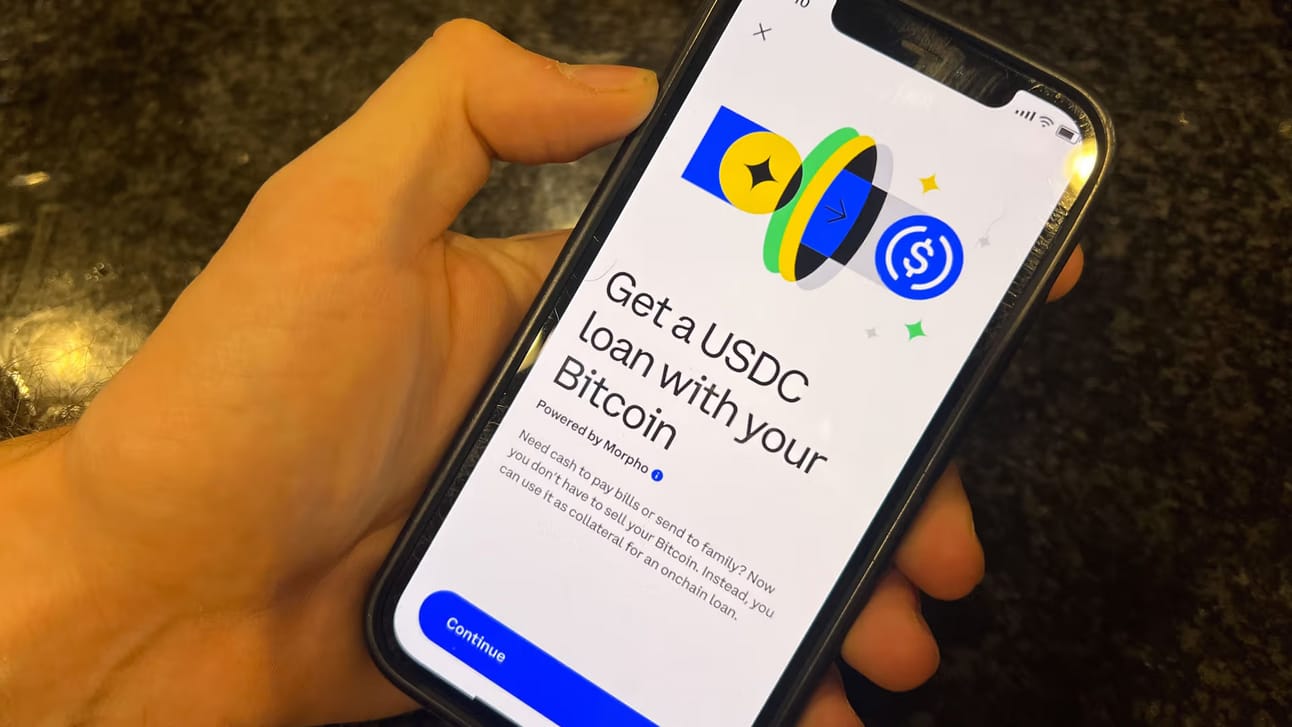- The Stablecoin Analyst
- Posts
- Coinbase has Launched the Future of Collateralized Lending
Coinbase has Launched the Future of Collateralized Lending

💸 Coinbase’s Crypto-Backed Loans: The Most Underrated Lending Product in Crypto?
Most people know Coinbase as a crypto exchange. Most people know Coinbase as a crypto exchange. But recently, they’ve been building something that looks less like crypto and a lot more like the future of everyday finance.
It’s called Crypto-Backed Loan, and at first glance, it seems like a familiar feature.A user opens the Coinbase app, taps “Borrow,” and receives a loan in USDC, a regulated dollar-pegged digital asset that behaves like cash. There are no lengthy forms, no credit checks, and no waiting period.
But what’s actually happening behind the scenes is much more interesting.
Instead of routing through a bank or an internal credit desk, the loan is executed entirely on public infrastructure.A user’s crypto assets (like BTC and ETH) — are securely locked as collateral in a public, automated system. A wallet is created for them on Coinbase’s blockchain network (called Base), and a loan is issued transparently onchain.
To the user, it feels like a standard fintech product. But under the hood, it’s something entirely new: a self-custodied, programmable loan with real assets and no intermediaries.
And the numbers show it’s working.
Since launching in January 2025, Coinbase’s onchain loans have served more than 10,000 users. These users have borrowed over $331 million in USDC, backed by $685 million in crypto collateral. This isn’t a concept or a test. It’s real usage, at real scale.
Early Growth, Real Usage
In the first month alone, weekly user signups grew eightfold. Borrowing volume followed, jumping from $1.2 million to $6.4 million in just four weeks. Importantly, users weren’t just signing up. They were borrowing actively, and doing so responsibly. On average, borrowers posted more than twice the required collateral. This is a sign of either strong user intent or thoughtful product risk design.
By May, growth had transitioned into stability. Borrowing activity remained consistent between $28 million and $36 million per week with the average user taking out $13,000 to $15,000 in USDC loans. These aren’t small-ticket transactions. This is real credit behavior, emerging on a blockchain-native technology. That suggests the protocol isn’t just onboarding casual users; it’s attracting borrowers who treat this like a serious financial tool.
From First-Time Users to Returning Borrowers: The Product Is Sticking
Instead of explosive onboarding prior to May, the trend turned to stability. Weekly active users settled between 2,100 and 2,300. The share of new users fell to about 25 to 30 percent of the total, pointing to a maturing product that retains rather than churns.
It Feels Like Fintech, But It’s All Onchain Under the Hood
One of the most interesting things about Crypto-Backed Loan is how invisible the crypto complexity is. Users don’t need to set up a crypto wallet, write down seed phrases, or navigate gas fees. Coinbase abstracts all of that. But even though the interface feels like traditional fintech, the core infrastructure is fully onchain.
This blend — Web2 on the front, Web3 on the back — might be the most realistic path to mass adoption. Users get ease of use. Builders get the benefits of open infrastructure. And the industry gets a real use case for stablecoins beyond speculation and payments.
Crypto That Just Works Without Feeling Like Crypto
Coinbase didn’t just launch a new feature. They opened the door to a new kind of financial product.
One that’s fast, transparent, always available, and doesn’t rely on traditional banks or complicated systems behind the scenes.
Crypto doesn’t need to feel like a different world. Most people don’t want to learn how blockchains work. They just want tools that fit into their lives and work the way they expect.
What makes this so powerful is that Coinbase didn’t try to change people. They changed the product to feel familiar.
And that might be the most important shift in finance we’ve seen in a long time.
P.S. I write about how stablecoins are powering real-world apps with data, not hype. Subscribe to stay ahead.
(Cover Picture credits: David Friedman)